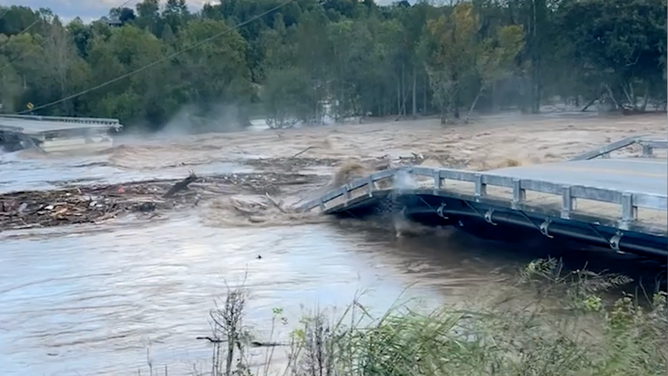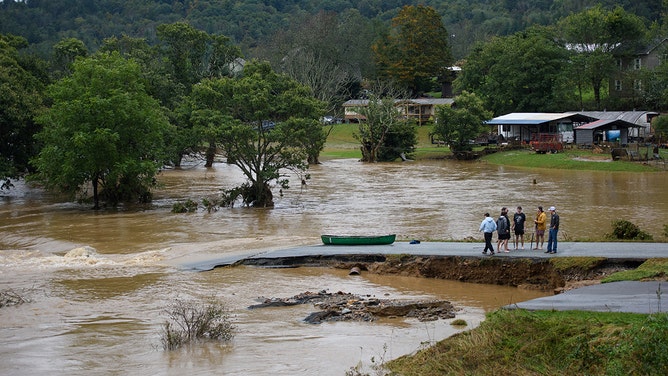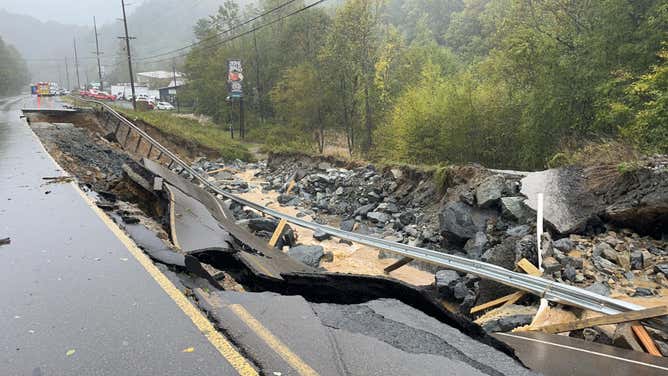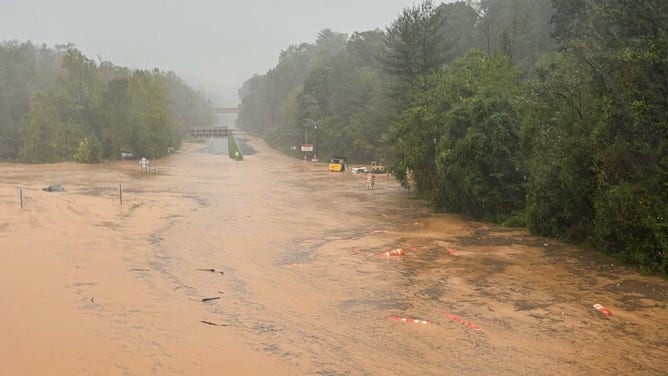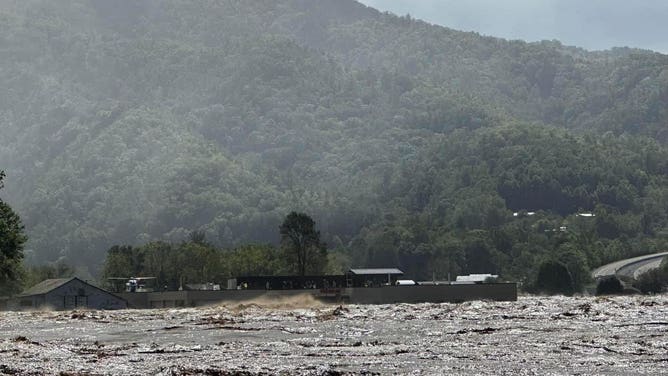Drone video shows historic Biltmore Village under water after flooding in North Carolina
The Biltmore Village was originally constructed in the 1800s for workers of the Biltmore Estate. George Vanderbilt, a historic collector, built the Biltmore Estate in Asheville, North Carolina.
Drone video: Historic flooding of North Carolina's Biltmore Village
More than 200 people were reported rescued from floodwaters in North Carolina following Helene’s torrential rains with more expected in the coming days.
ASHEVILLE, N.C. – Drone video captured above the historic Biltmore Village in western North Carolina shows the impact of more than a foot of rainfall on the community around Asheville during Hurricane Helene.
A record crest of the nearby Swannanoa River sent floodwaters racing through the village, destroying the first floors of many buildings and trapping residents who did not evacuate.
The drone video showed water levels reaching the first floors of several structures but still below the height of traffic lights, which are typically at least 20 feet tall.
Biltmore Village, originally constructed in the 1800s for workers of the Biltmore Estate, has since become a popular tourist destination.
As of Saturday, North Carolina Governor Roy Cooper’s office reported that more than 200 people had been rescued from floodwaters, with rescue operations expected to continue for several more days.
Buncombe County officials confirmed multiple fatalities around Asheville but noted the situation remained fluid, with at least 60 people still missing in the region, which has a population just shy of 300,000.
"We have biblical flooding here, and it has been extremely significant," a county official said.

Helene rainfall totals
(FOX Weather)
MILLIONS IN DARK, FLOOD EMERGENCIES PERSIST AS SOUTHEAST STRUGGLES IN WAKE OF HELENE’S DEADLY WRATH
Resources from the state and federal governments have been requested, but with only one main thoroughfare, Interstate 26, still open, the arrival of aid was expected to be slow.
A section of Interstate 40 collapsed due to the weight of a landslide between Asheville and eastern Tennessee, leading to an extended closure. Transportation officials have not provided an estimate for when the roadway will reopen.
As of Saturday, more than 400 miles of state-maintained roads were closed due to flooding and the threat of additional landslides.
In addition to the flooding, cellphone towers were reported to be inoperable, and there was widespread disruption of water services.
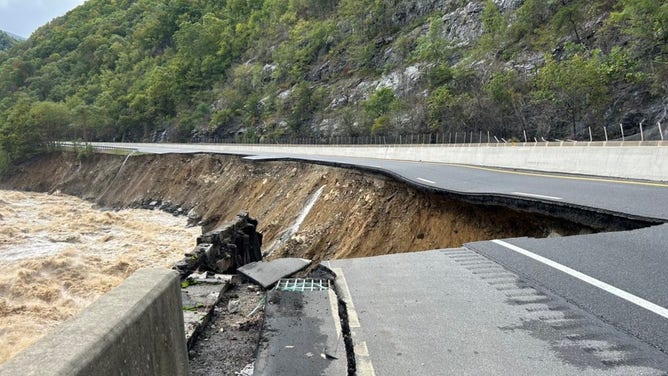
Interstate 40 collapse in North Carolina.
(NCDOT / FOX Weather)
"This is a historic and catastrophic storm for Western North Carolina, and I’m grateful to first responders working right now to save lives and evacuate residents," Cooper stated. "Efforts are also underway to get power and communications restored, and we’re bringing in needed supplies by air."
A curfew was imposed in the city of Asheville from 7:30 p.m. to 7:30 a.m. each day and officials expected it to remain in effect until at least next week.





